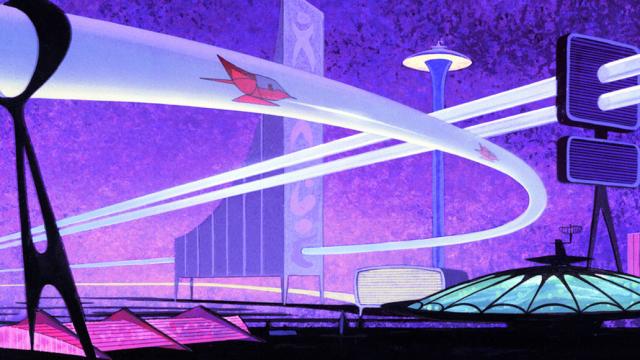Today, the New York Times asked seven entrepreneurs and tech executives about what’s in store for the future. It’s a fascinating snapshot of futurist thinking in 2014. But these aren’t just the dreams of tomorrow — most of them are the dreams of yesterday’s tomorrows as well.
This isn’t to say that all of these predictions are doomed to fail. In fact, most of them seem quite plausible. But it’s important to put them in a historical context anytime we’re prognosticating. Nobody can predict the future with absolute certainty, and that’s actually what makes futurism so fun.
Below I’ve taken a small sample of the 2014 predictions published at the New York Times and dropped in a few similar predictions from history. Honestly, this list doesn’t even begin to scratch the surface. But it’s a reminder that we’ve been promised many of these things before.
What far-off technology will be commonplace in a decade?
2014: “Personalised medicine. Imagine a unique drug that’s printed for you and your condition based on your individual gene sequencing.” [Reid Hoffman]
1997: “Around 2012, a gene therapy for cancer is perfected. Five years later, almost one-third of the 4000 known genetic diseases can be avoided through genetic manipulation.” [July 1997 issue of Wired magazine]
1996: “In fact, it could be possible within 10 years — and certainly within 20 — for you to carry around a smart card containing your complete genetic makeup. You would bring it with you when visiting your doctor, and the doctor would use it to prescribe medications or other treatments to meet your own specific needs. This is one example of the overarching trend of technology becoming more personalised in the decade ahead.” [July-August 1996 The Futurist magazine]
Which industry will tech put out of business next?
2014: “Higher education.” [Ev Williams]
1935: “We will undoubtedly have lectures of every conceivable kind present to us right in our homes, when practical television arrives, possibly a year or two off. Mathematics, geometry, and dozens of other subjects will be ‘apple pie’ so far as broadcasting them through the air by radio is concerned, when television is available for the purpose, compared to the present situation when it is quite impractical to attempt giving lectures on geometry or other subjects, which really require diagrams or pictures to make them clear to the uninitiated.” [April 1935 Short Wave Craft magazine]
What technology will seem antiquated in a decade?
2014: “Keys.” [Sebastian Thrun]
1996: “Pockets will rarely jingle in 10 years as credit-card-sized smart cards begin to replace cash, as well as keys.” [July-August 1996 The Futurist magazine]
1993: “Have you ever opened doors with the sound of your voice?” [David Fincher’s AT&T ad campaign “You Will”]
1982: “You’ll be ”talking to your stove, talking to your door lock, talking to everything.” [Futurist talking about the year 2000 in the January 10, 1982 New York Times]
What is the next issue to undergo a sea change in social acceptance?
2014: “We’ll reject factory animal farming.” [Ev Williams]
1982: ”You will definitely see this returning to a more human scale society. It will be more efficient and do things locally. It won’t make sense to buy Wonder Bread baked in Illinois.” [Futurist talking about the year 2000 in the January 10, 1982 New York Times]
1914: “As animal food will have been wholly abandoned before the end of this century, the debris of the kitchen will be much more manageable than at present.” [Anaconda Standard newspaper January 11, 1914]
What is tech’s role in reducing income inequality?
2014: “There is a bow wave of uncounted billions of dollars of philanthropic contributions that will unfold over the next 10 to 20 years from Silicon Valley.” [Marc Andreessen]
1997: “By about 2000, the United States economy is doing so well that the tax coffers begin to swell. This not only solves the deficit problem but gives the government ample resources to embark on new initiatives. No longer forced to nitpick over which government programs to cut, political leaders emerge with new initiatives to help solve seemingly intractable social problems, like drug addiction. No one talks about reverting to big government, but there’s plenty of room for innovative approaches to applying the pooled resources of the entire society to benefit the public at large. And the government, in good conscience, can finally afford tax cuts. A spirit of generosity returns. The vast majority of Americans who see their prospects rising with the expanding economy are genuinely sympathetic to the plight of those left behind.” [July 1997 issue of Wired magazine]
Picture: Illustration from the 1958 Disneyland TV episode Magic Highway USA
